Hitachi Seaside Park (ひたち海浜公園, Hitachi Kaihin Koen) is located in Ibaraki Prefecture on the Pacific Ocean coast of Japan. With an area of 215 hectares, it is one of the largest flower parks in Japan. In this large park, you can enjoy different kinds of flowers and trees throughout the year. There are also several other attractions such as a large lawn area, bicycle paths, an amusement park, and cafes and restaurants surrounded by natural beauty. It is the perfect destination for a day tour from Tokyo!
Perhaps the most famous place in this park is the Miharashi Hill, Miharashi no Oka (みはらしの丘) in Japanese. On this big hill, seasonal flowers are planted. We made a list of flowers/trees that you can see in this park throughout the year.
Spring in Hitachi Seaside Park
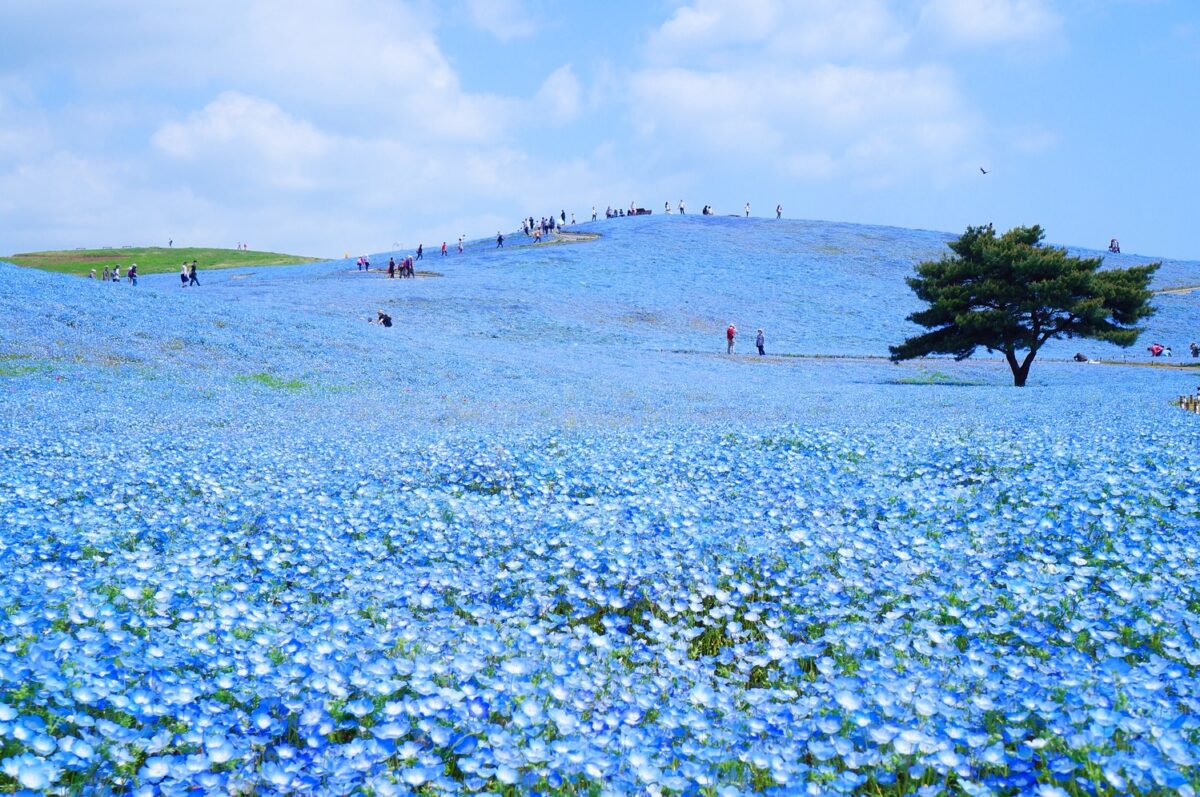
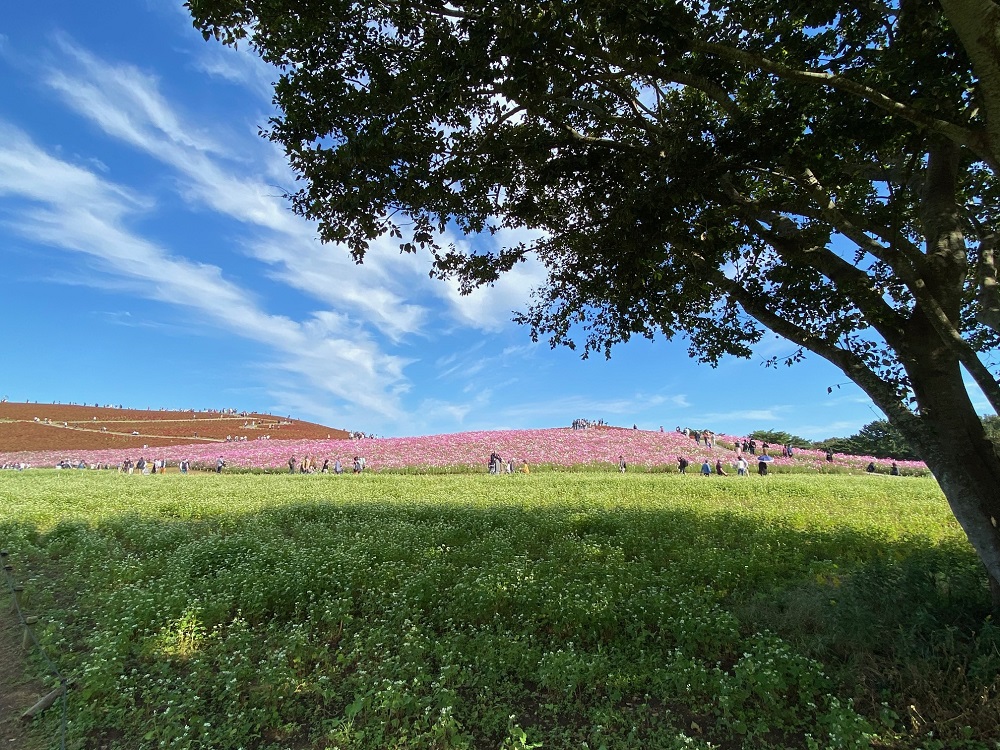
In springtime, the hill of Miharashi is covered with blue flowers: these are the small flowers of Nemophila. About 5 million Neophila are planted on this hill and standing in front of it feels like being surrounded by a sea of flowers. You can see the full bloom of Nemophila from mid-April to early May.
There is also a narcissus garden in which more than 1 million narcissi (with about 500 different varieties) are planted. Full flowering is between late March to mid-April. Around mid-May, the rose garden is filled with roses in several pink colors.
Summer in Hitachi Seaside Park
During the summer, the hill of Miharashi is now all green with the Kochia plant (plantae). The plant of Kochia remains green until the end of September and then in autumn, it becomes a vivid red. In the past, the branches of Kochia were used to make brooms. So in Japanese, this plant is also called ‘broom plant’.
The Valley of Perfume is filled with lavender towards the end of June and in mid-August, sunflowers color the foot of Miharashi hill bright yellow.
Autumn in Hitachi Seaside Park
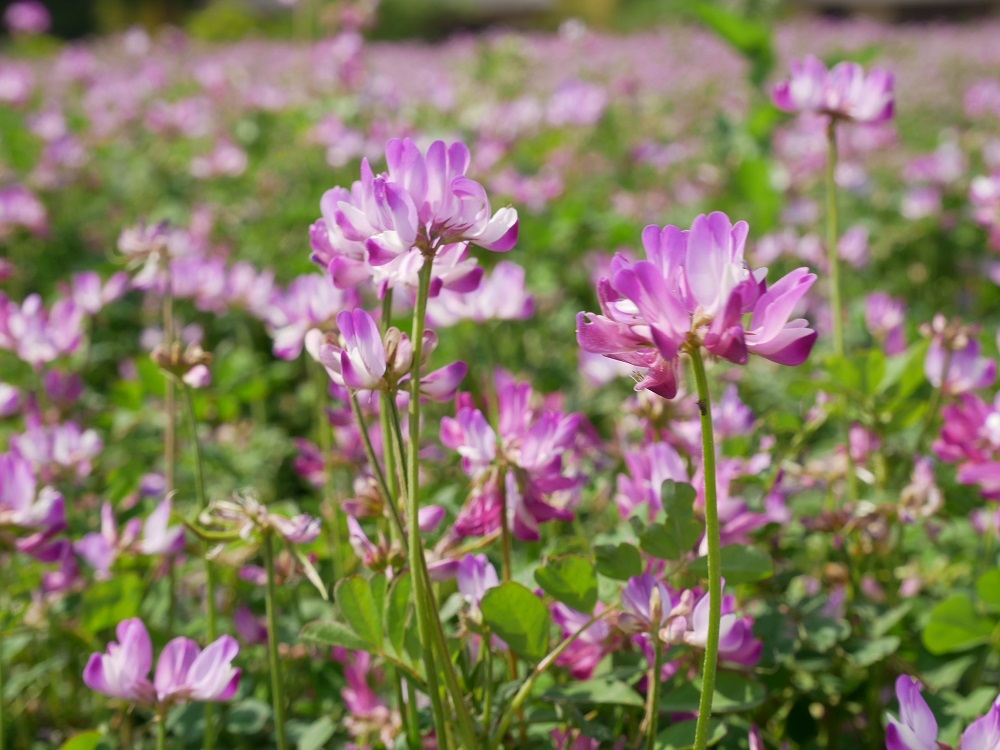
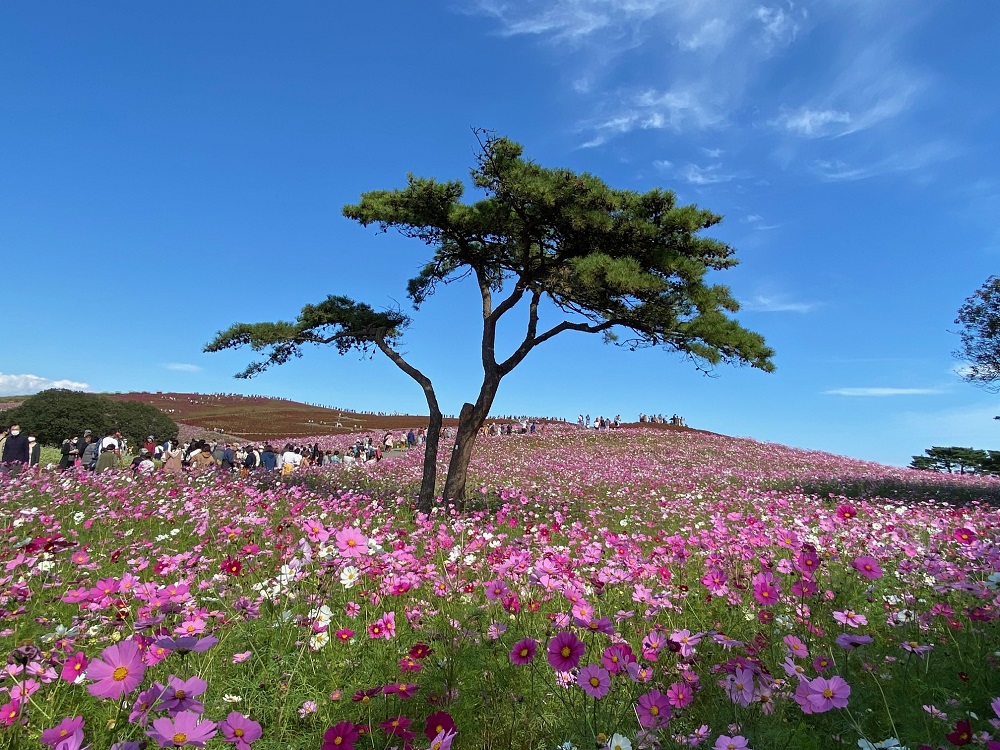
The famous Kochia plants start to change to their colors of autumn from the beginning of October. The green color becomes red little by little and in the middle of October, the leaves become all red.
At the foot of the Miharashi hill, the buckwheat flowers and cosmos are in full bloom between mid-October and the end of October. If you time it just right, you can appreciate the different colors at the same time: red, pink, green, and white.
Winter in Hitachi Seaside Park
In winter, Miharashi Hill is left to rest for the next spring, which makes the park a lot more quiet compared to the rest of the year. But there is still something to see as the tulips and the plum trees are blooming.
Our Experience in Hitachi Seaside Park in Spring
I visited Hitachi Seaside Park on April 15, 2020. I bought a one-day pass at Katsuta Station, which includes a return ticket for the bus and the entrance fee. The cost of this pass varies by the season. At the peak season of nemophila and kochia it is 930 yen. This is a good discount on the 1,330 yen you’d pay if you buy your tickets separately.
I really wanted to see the famous view of the hill covered with blue nemophila flowers. The spring of 2020 was warmer than average, so the flowers started to bloom a bit earlier. April 15 turned out to be almost the perfect timing. I also saw yellow rape blossoms, tulips, and daffodils. Springtime as well as the autumn season are the best times to come here for sure.

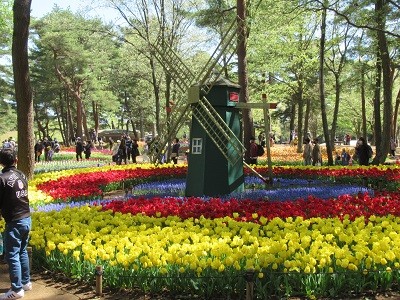
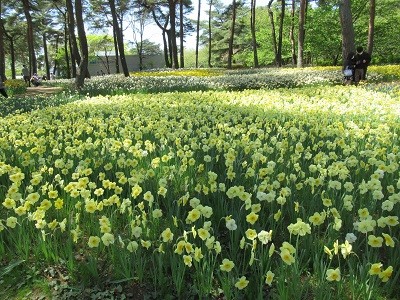
Food trucks were serving fast food such as hamburgers, okonomiyaki, curry rice, and so on. I had yakisoba (fried noodles) with squid ink and it was very tasty. I also tried nemophila ice cream. It tasted like ramune (a Japanese soft drink). It was a nice experience to eat the ice cream while overlooking the hill covered with nemophila!

Our Experience in Hitachi Seaside Park in Autumn
I visited Hitachi Seaside Park on October 21, 2020. When I woke up, the weather was very nice so I decided to go to Hitachi to see the changing colors of Kochia. It’s only 1 hour by train from Tokyo, so you can easily go there for a day trip from Tokyo (there are several parking lots but for the high season, I would advise you to go by public transportation).
It was a Monday but as it was a nice day, so there were a lot of people and they arranged an extra shuttle from Katsuta station (the closest train station to the park) to Hitachi Seaside Park. It’s about 15 minutes by local bus from Katsuta station.
My goal was to see the red color of Miharashi hill, so from the west entrance, I went directly to Miharashi hill, which was about a 15-minute walk. First, the fields of buckwheat flowers and cosmos welcomed us. Everybody stopped to take pictures. Behind these fields, the red-brown hill appeared. With the blue sky, it was just beautiful.
From the top of the hill, we could also see the Pacific Ocean and feel the sea air. It was really nice. After walking around for about 2 hours, I rested at a picnic table on the lawn and I enjoyed a small Japanese beer. It was very pleasant.
If you want to enjoy some of nature’s most beautiful vistas during your trip to Japan, as it’s only 1h30 from Tokyo, and I strongly recommend you to visit this great floral park.
Access Information
Transportation: From Tokyo (Shinagawa, Tokyo, Ueno) to Katsuta station, it takes about 1h30 by Joban express train of the JR line. From Katsuta Station, it is another 15 minutes by local bus from stop No.2 (during high season, direct shuttle service to the park is provided).
Entrance fee: Rates vary according to the season. 290-750 yen for adults (from 15 years old)
Hours: vary according to the season; 9.30 am – 6.30 pm. Closed on Tuesdays.
Your Japan Package Tour
As seasoned Japan experts, we create perfect Japan package tours including destinations like Hitachi Seaside Park. Check out our group tours and private tours, or contact us to start planning your unforgettable holiday to this fascinating country full of once-in-a-lifetime experiences, culture, history, nature, and delicious food!